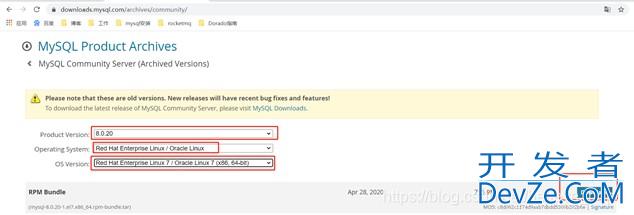Scrapy将数据保存到Excel和MySQL中的方法实现
目录
- 1. Excel
- 1.1 openpyxl
- 1.1.1 代码说明
- 1.1.2 注意
- 1.2 pandas
- 1.2.1 代码说明
- 1.2.2 常见错误
- 1.3 openpyxl和pandas对比
- 2. mysql
- 2.1 代码说明
- 2.2 pymysql介绍
- 2.2.1 游标对象
- 2.2.2 各种游标说明
- 3. 特别说明
Scrapy是一个用python实现的为了爬取网站数据、提取数据的应用框架。我们对于爬取到的数据存储到本地或数据库是经常要用到的操作。主要讲解两种保存方式:
- Excel
- MySQL
说明一下爬取到的数据:
爬取豆瓣读书top250网页的相关信息:
书名title、链接link、国家country、作者author、翻译者translator、出版社publisher、出版时间time、价格price、星级star、评分score、评分人数people、简介comment

1. Excel
主要讲解两种方式:openpyxl和pandas
1.1 openpyxl
class ExcelPipeline:
def __init__(self):
# 创建Excel文件
self.wb = Workbook()
# 选取第一个工作表
self.ws = self.wb.active
# 写入表头
self.ws.append(['title', 'link', 'country',
'author', 'translator', 'publisher',
'time', 'price', 'star', 'score',
'people', 'comment'
])
def process_item(self, item, spider):
self.ws.append([
item.get('title', ''),
item.get('link', ''),
item.get('country', ''),
item.get('author', ''),
item.get('translator', ''),
item.get('publisher', ''),
item.get('time', ''),
item.get('price', ''),
item.get('star', ''),
item.get('score', ''),
item.get('people', ''),
item.get('comment', '')
])
return item
def close_spider(self, spider):
self.wb.save('result.xlsx')
1.1.1 代码说明
ExcelPipeline 继承自 Scrapy 的 Pipeline 类,并重写了三个方法:__init__()开发者_PostgreSQL、process_item() 和 close_spider()。
在 __init__() 方法中:
- 创建了一个 Excel 文件,并选取了第一个工作表。然后,我们写入了表头。
- 当然你也可以将这部分代码写在
open_spider方法中
在 process_item() 方法中,我们将每一行的数据写入到工作表中。
process_item 方法:
- 不会覆盖之前已经写入的数据,它会在数据末尾追加新的行。
- 你调用多次
process_item方法,每次都会在表格的末尾追加一行新数据。
在 close_spider() 方法中,我们保存 Excel 文件。
1.1.2 注意
可以发现我在process_item()方法中使用了item.get(key, default):
考虑可能存在某些 item 中没有某些键值的情况,这可能会导致程序出错。
当然如果你已经进行过数据处理也可以直接用item[key]。
使用了 item.get(key, default) 方法来获取 item 中的键值,如果某个键不存在,则返回一个空字符串 ''
在 Scrapy 中,
item是一个字典类型,它由一系列键值对组成,每个键值对表示一个字段。在处理item时,我们通常需要从中获取某个字段的值。使用字典的get方法可以方便地实现这个功能。
get方法有两个参数:key表示要获取的键,default表示键不存在时的默认值。例如:
1.2 pandas
class ExcelPipeli编程客栈ne:
def __init__(self):
# 创建一个空的数据框
self.df = pd.DataFrame(columns=['title', 'link', 'country',
'author', 'translator', 'publisher',
'time', 'price', 'star', 'score',
'people', 'comment'
])
def process_item(self, item, spider):
# 将数据添加到数据框中
item['title'] = item.get('title', '')
item['link'] = item.get('link', '')
item['country'] = item.get('country', '')
item['author'] = item.get('author', '')
item['translator'] = item.get('translator', '')
item['publisher'] = item.get('publisher', '')
item['time'] = item.get('time', '')
item['price'] = item.get('price', '')
item['star'] = item.get('star', '')
item['score'] = item.get('score', '')
item['people'] = item.get('people', '')
item['comment'] = item.get('comment', '')
series = pd.Series(item)
self.df = self.df.append(series, ignore_index=True)
return item
def close_spider(self, spider):
# 将数据框保存到 Excel 文件中
self.df.to_excel('result.xlsx', index=False)
1.2.1 代码说明
定义了一个 ExcelPipeline 类,它包含了三个方法:__init__、process_item 和 close_spider。
__init__方法用于初始化类实例process_item方法用于处理每个爬取到的 item,将其添加到items列表中close_spider方法用于在爬虫关闭时将items列表中的数据保存到 Excel 文件中。
1.2.2 常见错误
在代码中有大量的item['title'] = item.get('title', '')类似代码
你可以选择不写,但如果item中有一些字段的值为None,而pandas不支持将None类型的值添加到DataFrame中,会导致程序错误。这一点比openpyxl要严格的多。
字典对象转换为Series对象
self.df是一个DataFrame对象,而item是一个字典对象。因此,需要将字典对象转换为Series对象,然后再将其添加到DataFrame中。
series = pd.Series(item) self.df = self.df.append(series, ignore_index=True)
only Series and DataFrame objs are valid这个错误一般就是发生在使用Pandas将数据转换成DataFrame时,传入的参数不是Series或DataFrame类型。
上面的代码就是用来避免这个问题的。
1.3 openpyxl和pandas对比
pandas和openpyxl都是非常强大的Python数据处理库,两者在不同的场景下可以发挥出各自的优势。
- 如果需要处理大量的Excel文件,需要对文件进行复杂的操作,比如格式化、图表等,那么openpyxl可能更适合,因为它专注于Excel文件的读写和操作,具有更高的灵活性和控制力。
- 如果数据已经在Python中,且需要进行各种统计分析和处理,如数据聚合、数据透视表、数据分组、数据清洗、数据可视化等,那么pandas可能更适合,因为它提供了丰富的数据处理工具和函数。
总的来说,两者都是很好的工具,具体使用哪一个取决于具体需求和场景。
2. MYSQL
可以使用Python的MySQL驱动程序,例如 mysql-connector-python 或 pymysql。主要将pymysql。
class MySQLPipeline:
def __init__(self):
# 连接 MySQL 数据库
self.conn = pymysql.connect(
host='localhost',
port=3306,
user='root',
password='your_password',
database='your_database',
charset='utf8mb4',
cursorclass=pymysql.cursors.DictCursor
)
# 创建一个游标对象
self.cursor = self.conn.cursor()
# 创建表
self.create_table()
def create_table(self):
# SQL 语句:创建数据表
sql = '''CREATE TABLE IF NOT EXISTS `book` (
`id` int(11) NOT NULL AUTO_INCREMENT,
`title` varchar(255) NOT NULL,
`link` varchar(255) NOT NULL,
javascript `country` varchar(255) NOT NULL,
`author` varchar(255) NOT NULL,
`translator` varchar(255) NOT NULL,
`publisher` varchar(255) NOT NULL,
`time` varchar(255) NOT NULL,
`price` varchar(255) NOT NULL,
`star` varchar(255) NOT NULL,
`score` varchar(255) NOT NULL,
`people` varchar(255) NOT NULL,
`comment` varchar(255) NOT NULL,
PRIMARY KEY (`id`)
) ENGINE=InnoDB DEFAULT CHARSET=utf8mb4 COLLATE=utf8mb4_unicode_ci'''
# 执行 SQL 语句
self.cursor.execute(sql)
# 提交事务
self.conn.commit()
def process_item(self, item, spider):
# SQL 语句:插入数据
sql = '''INSERT INTO `book` (
`title`, `link`, `country`,
`author`, `translator`, `publisher`,
`time`, `price`, `star`, `score`,
`people`, `comment`
) VALUES (%s, %s, %s, %s, %s, %s, %s, %s, %s, %s, %s, %s)'''
# 执行 SQL 语句
self.cursor.execute(sql, (
item['title'], item['link'], item['country'],
item['author'], item['translator'], item['publisher'],
item['time'], item['price'], itfeJeWEem['star'], item['score'],
item['people'], item['comment']
))
# 提交事务
self.conn.commit()
return item
def close_spider(self, spider):
# 关闭游标对象
self.cursor.close()
# 关闭数据库连接
s编程客栈elf.conn.close()
2.1 代码说明
我们创建了一个名为MySQLPipeline的自定义ScrapyPipeline。
__init__方法中接收了MySQL数据库的配置信息。
其中还调用了create_table,当然如果保证表已经存在,也没有必要这么写
如果你嫌每次连接都要写信息的话,可以在setting.py中定义MySQL相关变量:


create_table方法创建表book
process_item方法用于将抓取的数据插入到数据库表中。
close_spider方法用于关闭游标和连接。
2.2 pymysql介绍
2.2.1 游标对象
在Python中,连接数据库时需要创建一个数据库连接对象,然后通过这个连接对象创建一个游标对象。
游标对象是执行数据库操作的主要对象,它负责向数据库发送查询和获取结果。
在Python中,常用的游标对象有Cursor、DictCursor、SSCursor等。
Cursor:普通游标(默认),返回结果为元组类型。DictCursor:字典游标,返回js结果为字典类型。SSCursor:嵌套游标,可用于处理大数据集。
在获取大量数据时效率比普通游标更高,但是会占用更多的系统资源。
与普通游标相比,嵌套游标不会将整个查询结果读入内存,而是每次只读取部分数据。
根据需要,选择不同类型的游标对象可以方便我们对返回结果进行处理。
2.2.2 各种游标说明
创建连接对象时有这么一段代码:
cursorclass=pymysql.cursors.DictCursor
用于设置游标返回的数据类型,默认返回的是元组(tuple)类型,设置为DictCursor后可以返回字典(dict)类型,更方便处理数据。一般使用普通游标就行了
三种游标主要是在查询时的方式存在区别:
cur = conn.cursor()
cur.execute('SELECT * FROM my_table')
result = cur.fetchone() # 获取一条记录,返回的是元组类型
# 普通游标
print(result[0]) # 访问第一个字段的值
# 字典游标
print(result['id']) # 访问数据库中字段名为 id 的字段的值,{'id': 1, 'name': 'Alice'}
# 嵌套游标
print(result[0]) # 访问第一个字段的值
如果是查询的多条数据,则返回的是元组或字典组成的列表:
# 普通游标
[(1, 'John', 'Doe'), (2, 'Jane', 'Doe'), (3, 'Bob', 'Smith')]
# 字典游标
[{'id': 1, 'first_name': 'John', 'last_name': 'Doe'}, {'id': 2, 'first_name': 'Jane', 'last_name': 'Doe'}, {'id': 3, 'first_name': 'Bob', 'last_name': 'Smith'}]
3. 特别说明
每个item在被提交给管道时都会调用一次管道类的process_item方法。
每个item都会经过process_item方法进行处理,而open_spider和close_spider方法只会在爬虫启动和结束时执行一次。
在Scrapy中,可以通过在管道类的open_spider和close_spider方法中建立和关闭数据库连接,以减少连接建立和关闭的次数。
__init__方法也是只在Spider启动时只执行一次
具体做法是,在open_spider方法中建立数据库连接,在process_item方法中使用连接对数据进行存储操作,在close_spider方法中关闭连接。这样做可以有效减少连接的建立和关闭次数,提高爬取效率。
如果你在open_spider方法中创建了数据库连接,那么这个连接将会被共享并被多个process_item方法使用。
同样的,如果在close_spider方法中关闭了数据库连接,那么这个连接也会被所有的process_item方法共享并在爬虫结束时关闭。
这种做法可以减少不必要的连接和关闭操作,从而提高性能。
到此这篇关于Scrapy将数据保存到Excel和MySQL中的方法实现的文章就介绍到这了,更多相关Scrapy数据保存到Excel和MySQL内容请搜索我们以前的文章或继续浏览下面的相关文章希望大家以后多多支持我们!








 加载中,请稍侯......
加载中,请稍侯......
精彩评论